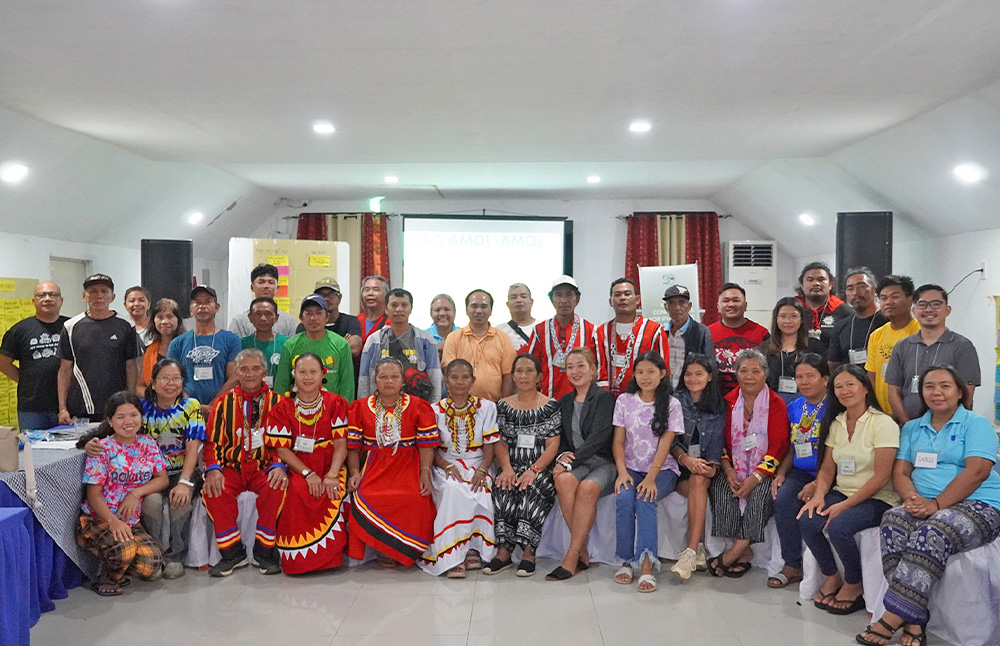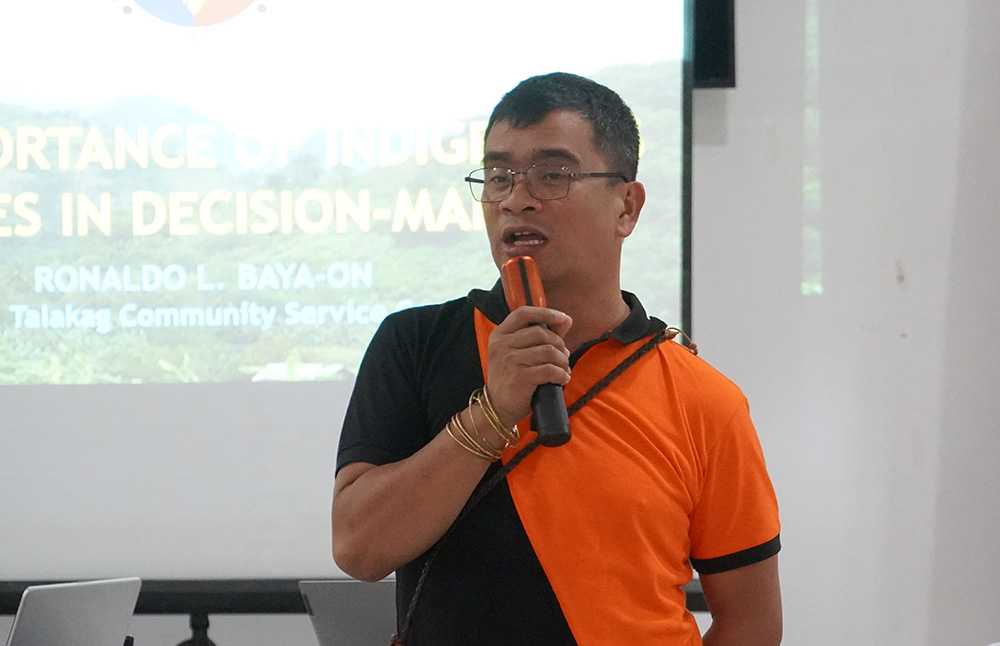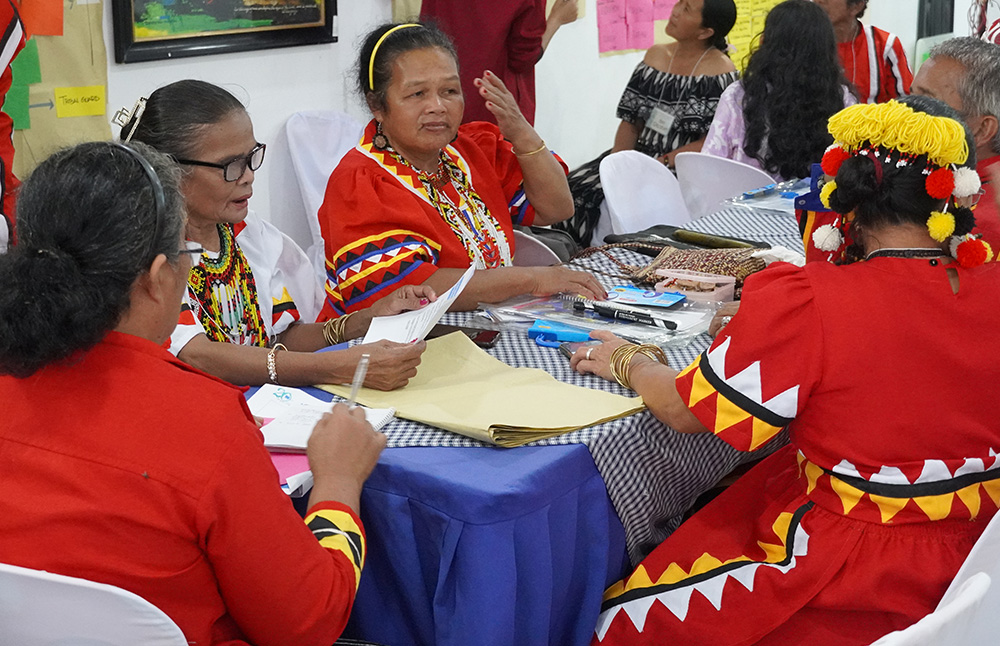
Participants/ IP leaders from Misamis Oriental, Bukidnon, and Cagayan de Oro City. (SAMDHANA/Xenia)
- admin
- 26 March 2024
- Feature
IPs In Northern Mindanao Push For Representation In River Basin Management Council
Tribal leaders from several ancestral domains pushed for representation in the Cagayan de Oro River Basin Management Council (CDORBMC) during an inter-ancestral domain gathering from June 29 until July 2, 2023 that aimed to unify the conservation efforts of Indigenous Peoples communities.
The gathering was based on the realization that physical changes in the uplands, which are mainly inhabited by the IPs, will impact on the environment in the lowland areas of the river basin.
Held in Libertad, Misamis Oriental, the activity attended by IP leaders from Misamis Oriental, Bukidnon, and Cagayan de Oro City also tackled problems faced by the communities in relation to managing the river basin as well as issues concerning violations of the Free, Prior and Informed Consent (FPIC) process.
In his presentation on the importance of IPs in decision-making in the council, Ronaldo L. Baya-on, chief of the community service center in Talakag, Bukidnon, cited the role of IPs in conservation due to their sustainable resource use practices. He said decision-making may use a legal or cultural basis.

At the same time, Bayaon noted several problems confronting the IPs in his town. These included rampant selling of lands, intrusion of migrants, leadership struggles, and overlapping claims and tenure instruments created by government programs and projects.
“There are problems that will need government intervention but there are problems that the community can resolve themselves,” he said.
Bae Inatlawan, leader of the Bukidnon-Daraghuyan Ancestral Domain in Malaybalay City, said one environmental problem her community is facing is the expansion of plantations that may affect the quality of the surrounding bodies of water and affect the future generations.
The other communities shared similar problems concerning the entry of plantations producing high value crops, endangering the quality of air and water due to their use of chemicals. Quarrying, mining, and logging by non-IPs, all without free, prior, and informed consent of the indigenous communities, were reported.
The participants likewise expressed concern on tourism activities especially those that encroached on their sacred areas.
For government programs and projects that created problems for the communities, the IPs specifically mentioned Community-Based Forest Management (CBFM) and Integrated Forest Management Agreement (IFMA) of the Department of Environment and Natural Resources (DENR), and land titling under the agrarian reform program of the Department of Agrarian Reform.
CBFM is a stewardship program that gives usufruct rights to people’s organizations to specific areas within forestlands. The IFMA is an agreement entered into by and between a natural or juridical person and the DENR wherein the latter grants to the former the right to develop, utilize and manage a small tract of forestland supposedly consistent with the principle of sustainable development. Both agreements expire after 25 years. The IPs reported that these programs do not obtain their FPIC and have allowed outsiders to enter their ancestral domain.
The IP leaders emphasized that such problems and issues have made their representation in the CDORBMC necessary.
A policy paper noted that the problems besetting the Cagayan and Tagoloan river basins are partly caused by the exclusion of local communities, particularly the IPs, from policy- and decision-making. It recommended that, along with measures to address poverty and improve governance, mobilizing IP participation, or what some would call “engaging cultural assets,” is crucial to conserving the lifeblood of the two river basins (Mordeno, 2016).
It was resolved that another gathering to be attended by more community leaders will be called for before electing a representative to the management body. There was also a proposal that IPs should be represented not just in the board but also in the other structures of the council.

The CDORBMC is a multi-stakeholder body for environmental governance formed in 2010 with the Archdiocese of Cagayan de Oro and DENR regional office as lead entities. The Executive Committee is headed by the Archbishop of the Archdiocese of Cagayan de Oro, and the co-chairs are the City Mayor of Cagayan de Oro City, and Regional Directors of Dept. of Interior and Local Government -X, DENR-X, and Department of Agriculture-X. At present, the Council Secretariat is the DENR River Basin Management Office. It has 14 members from Local Government Units and government agencies; members from the academe and civil society organizations. It has working relations with the Macajalar Bay Development Alliance and Tagoloan River Basin Management Council.